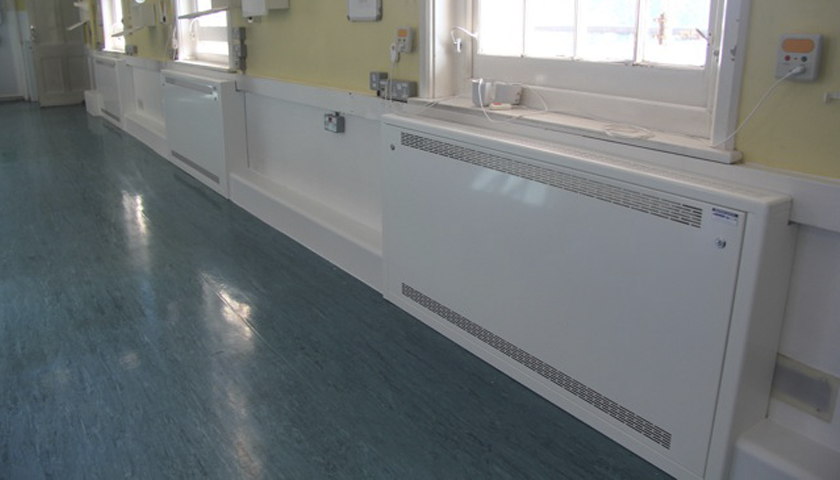British encasement specialist, Pendock has been involved with important upgrades within the Whipps Cross University Hospital in Waltham Forest, London, which is affiliated with the prestigious and world-famous Barts Health NHS Trust and, having been founded in 1917, initially treated wounded soldiers from the Great War.
Today it is famous for being the birthplace of former footballer and fashion icon, David Beckham and for having one of the largest and busiest A&E departments in the UK plus it was the first to open a hyperbaric unit. But, as with all older buildings and the advent of modern technology, refurbishment becomes necessary at Whipps Cross Hospital, the trust undertook a mock CQC audit which immediately highlighted a number of uncovered and very hot radiators as well as piping – obviously a burns risk to the elderly and infirm.
The project management team, WT Partnership, employed DAVCO Construction Co Ltd. to install 250 radiator low surface temperature guards, plus some 300 meters of boxing to cover the exposed pipework. This was after Pendock had completed a trial installation on Bracken Ward and carried out a detailed measurement survey of other areas during August, subsequent to the hospital’s risk assessment findings.
Pendock Ultima and Ultima Plus type LST radiator guards were specified, being that they afford extra safety with their ‘bull-nose’/rounded corners against injury caused by falls or trips or even for patients who may see sharp corners as an opportunity to self-harm. All Pendock guards can be fitted with a welded, ligature resistant mesh, which sits behind the radiator grille, if require.
Additionally, the Ultima and Ultima Plus ranges of guards feature an antibacterial coating as standard to protect against and even kill MRSA, Salmonella, E-coli and C-difficile bacteria. While for further hygiene – and to facilitate maintenance work – the drop down panels are easily accessible via key entry.
At the Whipps Cross University Hospital, both the guards and pipe boxing have been specified in white, although there is a wide range of colour options available to suit varying applications. The pipe covering chosen at the hospital is Pendock’s MX Ply boxing, which is manufactured in pre-formed wood, uPVC or metal and comes with a range of accessories including internal and external corners, stop-ends and butt ends; as well as the removable plastic panels that enable access, for example, to services such as stop cocks. Featuring a 90º degree angle, the casings can be utilized at skirting level, vertically and horizontally on walls as well as in corner locations.
All radiator guards are available with preformed cut-outs and valve access panels with no on-site cutting required, therefore speeding up installation time and minimizing disruption to patients and staff. As part of Pendock’s package, the encasement specialist was asked to pre-cut and pre-drill any extra holes for the covers and piping at its factory, in order to minimize noise and as well as mess, onsite. Indeed, Duncan McPherson, the site manager for WT Partnership, confirmed he was very pleased with the overall performance and service as well as the product specification from Pendock. This should be no surprise when you consider that the company’s radiator guard range has been developed in conjunction with a number of NHS Trusts.
Where a guaranteed temperature control is required a baffle can be fitted below the radiator grill. This will enable the guard to comply with regulations where surface temperatures must not exceed 43° at a water inlet temperature of 80°C and will conform to NHS Estates guidelines. Pendock LST Radiator Guards with this feature have been tested and approved by the Building Services Research and Information Association (BSRIA).


